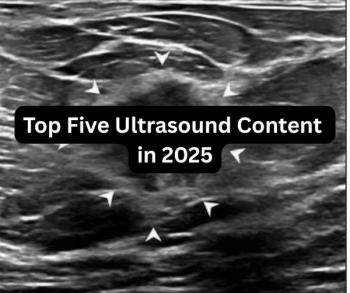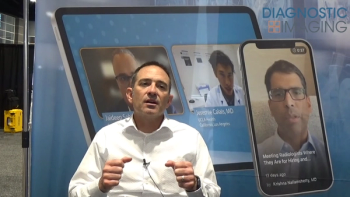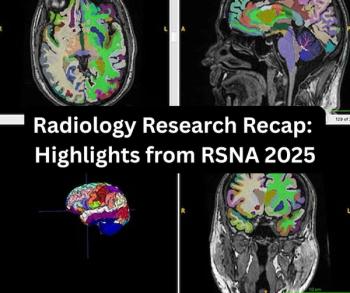
Multicenter trials update CTA performance stats
A series of prospective, multicenter trials comparing 16-slice CT angiography with conventional angiography show results similar to single-center trials, although CTA performance in some applications is slightly lower than previously reported, according to presentations at the Stanford Multidetector-Row CT meeting on Saturday.
A series of prospective, multicenter trials comparing 16-slice CT angiography with conventional angiography show results similar to single-center trials, although CTA performance in some applications is slightly lower than previously reported, according to presentations at the Stanford Multidetector-Row CT meeting on Saturday.
Studies that demonstrate CTA's value over coronary angiography are needed if the technique is to become fully established and accepted by major insurers. Research to date has been of high quality and yielded excellent results, with high negative predictive values (NPV) for coronary CTA. The downside is that these studies were conducted in single centers.
"With single-center studies, there might be a bias. Studies that do not have the best results are less likely to get published. Accuracy parameters may be overestimated," said Dr. Mario Garcia, a professor of medicine at the Cleveland Clinic.
In addition, single-center studies conducted to date indicate a wide range in the number of segments that cannot be evaluated with CTA, from 5% to 20%. In some of these studies, only a small number of patients were enrolled.
The first multicenter study presented at the Stanford meeting was the computed tomographic scanning and catheter angiography (CATSCAN) study, completed in early 2005. This trial included 238 patients from 16 centers in the U.S., Europe, Japan, and Israel. Researchers evaluated use of CTA in patients with suspected coronary artery disease who were referred for nonemergent angiography.
"Our data suggest the number of nonevaluable segments is slightly larger than single center trials, and that per-segment and per-patient positive predictive value is slightly lower than what has been reported in single studies. Per-segment and per-patient negative PPV are relatively the same," Garcia said.
Garcia said the exact figures are embargoed until October, when he will present study data at the European Society of Cardiology meeting in Barcelona. Due to the embargo, in an interview with Diagnostic Imaging, he also could not comment on whether the slight differences should cause concern. He did say, "We don't have to be too worried."
In the CATSCAN trial, the mean age of patients was 60, with a mean BMI of 27. Of the total studied, 154 had undergone a stress test within one year of the start of the study, of which 118 were positive, 17 negative, and the rest indeterminate. Those with a calcium score of 600 or above went straight to conventional angiography and the others were scanned with CTA. The prevalence of disease in this second group was 32%.
The average heart rate of patients scanned was 59 BPM; 22 patients had arrhythmias during scanning. Mean scan time was 24 seconds. Researchers were able to obtain a complete data set for evaluation in 92% of patients scanned. The most common reason for not achieving this was cardiac motion (44%).
The second prospective trial discussed at the Stanford symposium was a study performed in six major cardiovascular centers in Japan on scanners from multiple vendors: Siemens, GE, and Toshiba.
Researchers looked at whether 16-slice CTA was accurate in detecting stenosis in 114 patients with suspected coronary artery disease. All patients were under 75 years of age, had a heart rate below 90, and did not have atrial fibrillation.
Out of 1493 segments, 1360 (91%) were interpretable, said Dr. Sachio Kuribayashi, radiology chair at the Keio University School of Medicine in Tokyo. The remaining 9% were not accessible, mainly due to severe calcification or motion artifact.
Of the interpretable segments, researchers found the following:
- sensitivity, 85%;
- specificity, 95%;
- NPV, 97%;
- PPV, 80%;
- accuracy, 93%; and
- overall sensitivity, 71%.
"Our results are similar to what has been reported in single-center studies in terms of sensitivity and specificity, NPV and PPV, and on equipment from different vendors. Sixteen-row CTA detected significant coronary stenosis with high accuracy," Kuribayashi said.
Although the trial included multiple vendors and centers, it is unclear whether the findings can be generalized, because all of the patients were from Japan, where people generally have a lower BMI.
Newsletter
Stay at the forefront of radiology with the Diagnostic Imaging newsletter, delivering the latest news, clinical insights, and imaging advancements for today’s radiologists.




























